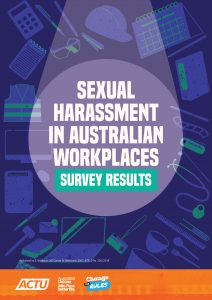The Victorian Government has instigated a Royal Commission into Mental Health. At the moment it is receiving submissions to assist it in developing the Terms of Reference. This is an odd process that delays the Commission’s start and is giving the impression that the Commission has already commenced.

However, it is important that occupational health and safety (OHS) advocates become deeply involved in this Royal Commission as psychological harm in the workplace, and caused by the workplace, is a hazard that employers are obliged to try to eliminate. If the workplace context of mental health is not overtly included in the Commission’s Terms of Reference, we will miss a major opportunity for the changes required to prevent psychological incidents and will likely remain with only the symptomatic relief offered by most workplace wellbeing strategies and products.
On the Submissions website, I prioritised “Prevention and Early Intervention” and the “Prevent of Suicide” as my top priorities and make these concise suggestions.
Are there any additional themes that should be included in the terms of reference for the Royal Commission into Mental Health?
It is vital that the issue of Prevention is included in the terms of reference as investment in and attention to prevention has been shown to be the best way to achieve the most return on investment.
The workplace health and safety context should also be mentioned as work can create psychological harm but can also have benefits by providing people with a purpose as well as an independent income.
I encourage all SafetyAtWorkBlog readers who are concerned about workplace psychosocial hazards to visit the submission web page so that the Commission understands the importance that occupational health and safety has in preventing harm.



 Some media reports on the
Some media reports on the  The trade union movement was instrumental in showing that workplace bullying was a pervasive problem in Australian workplaces. Many Codes of Practice and guidances for workplace bullying and occupational violence were written shortly after the action by the Australian Council of Trade Unions almost two decades ago. But, for some reason, although sexual harassment was mentioned in those early documents, it never received the attention in occupational health and safety (OHS) circles that, in hindsight, it should have.
The trade union movement was instrumental in showing that workplace bullying was a pervasive problem in Australian workplaces. Many Codes of Practice and guidances for workplace bullying and occupational violence were written shortly after the action by the Australian Council of Trade Unions almost two decades ago. But, for some reason, although sexual harassment was mentioned in those early documents, it never received the attention in occupational health and safety (OHS) circles that, in hindsight, it should have.